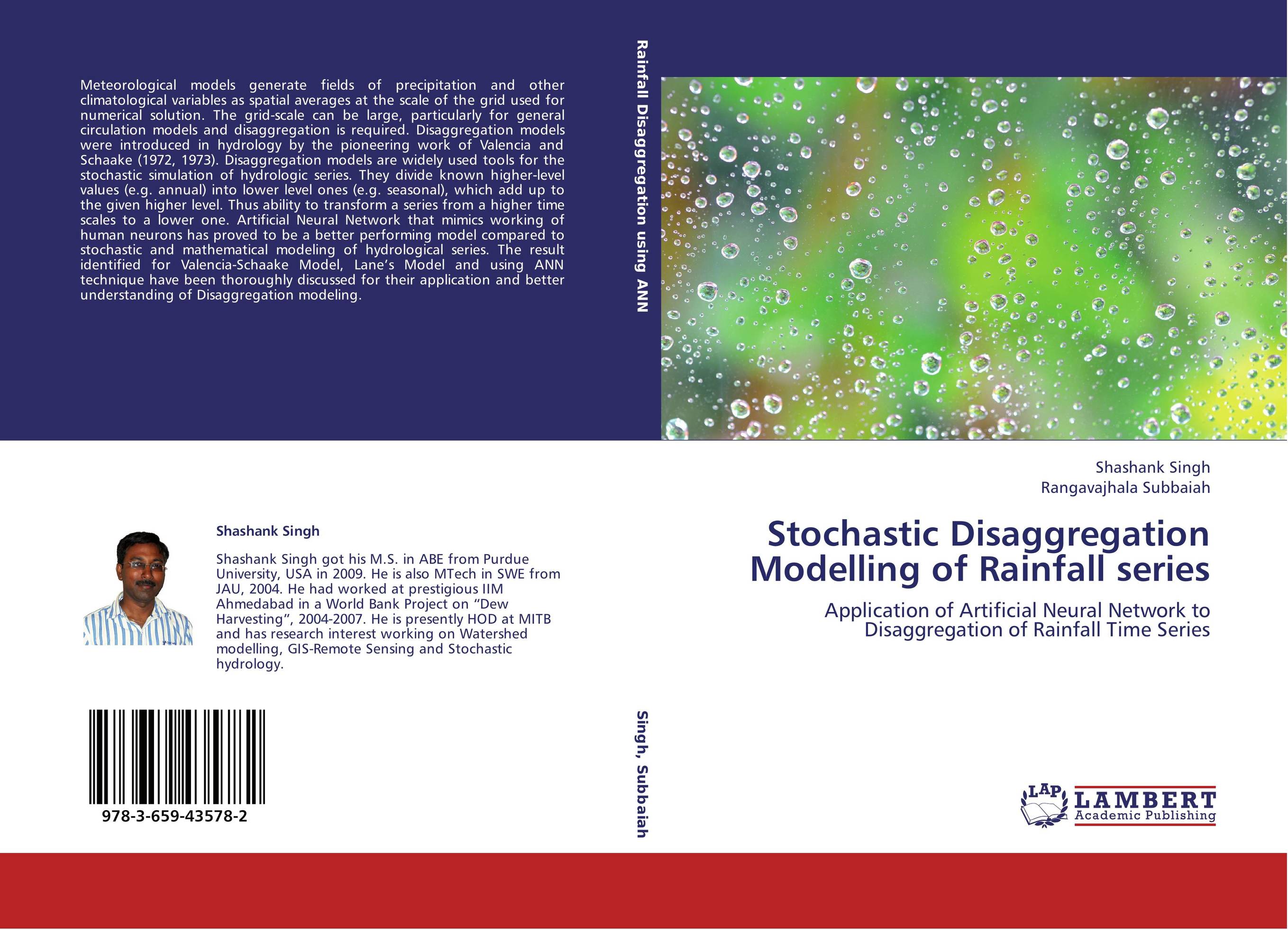| Поиск по каталогу |
|
(строгое соответствие)
|
- Профессиональная
- Научно-популярная
- Художественная
- Публицистика
- Детская
- Искусство
- Хобби, семья, дом
- Спорт
- Путеводители
- Блокноты, тетради, открытки
Stochastic Disaggregation Modelling of Rainfall series. Application of Artificial Neural Network to Disaggregation of Rainfall Time Series

В наличии
| Местонахождение: Алматы | Состояние экземпляра: новый |

Бумажная
версия
версия
Автор: Shashank Singh and Rangavajhala Subbaiah
ISBN: 9783659435782
Год издания: 2013
Формат книги: 60×90/16 (145×215 мм)
Количество страниц: 140
Издательство: LAP LAMBERT Academic Publishing
Цена: 36698 тг
Положить в корзину
| Способы доставки в город Алматы * комплектация (срок до отгрузки) не более 2 рабочих дней |
| Самовывоз из города Алматы (пункты самовывоза партнёра CDEK) |
| Курьерская доставка CDEK из города Москва |
| Доставка Почтой России из города Москва |
Аннотация: Meteorological models generate fields of precipitation and other climatological variables as spatial averages at the scale of the grid used for numerical solution. The grid-scale can be large, particularly for general circulation models and disaggregation is required. Disaggregation models were introduced in hydrology by the pioneering work of Valencia and Schaake (1972, 1973). Disaggregation models are widely used tools for the stochastic simulation of hydrologic series. They divide known higher-level values (e.g. annual) into lower level ones (e.g. seasonal), which add up to the given higher level. Thus ability to transform a series from a higher time scales to a lower one. Artificial Neural Network that mimics working of human neurons has proved to be a better performing model compared to stochastic and mathematical modeling of hydrological series. The result identified for Valencia-Schaake Model, Lane’s Model and using ANN technique have been thoroughly discussed for their application and better understanding of Disaggregation modeling.
Ключевые слова: artificial neural networks, Time Series, Rainfall analysis, Disaggregation modelling, Stochastic Hydrology



